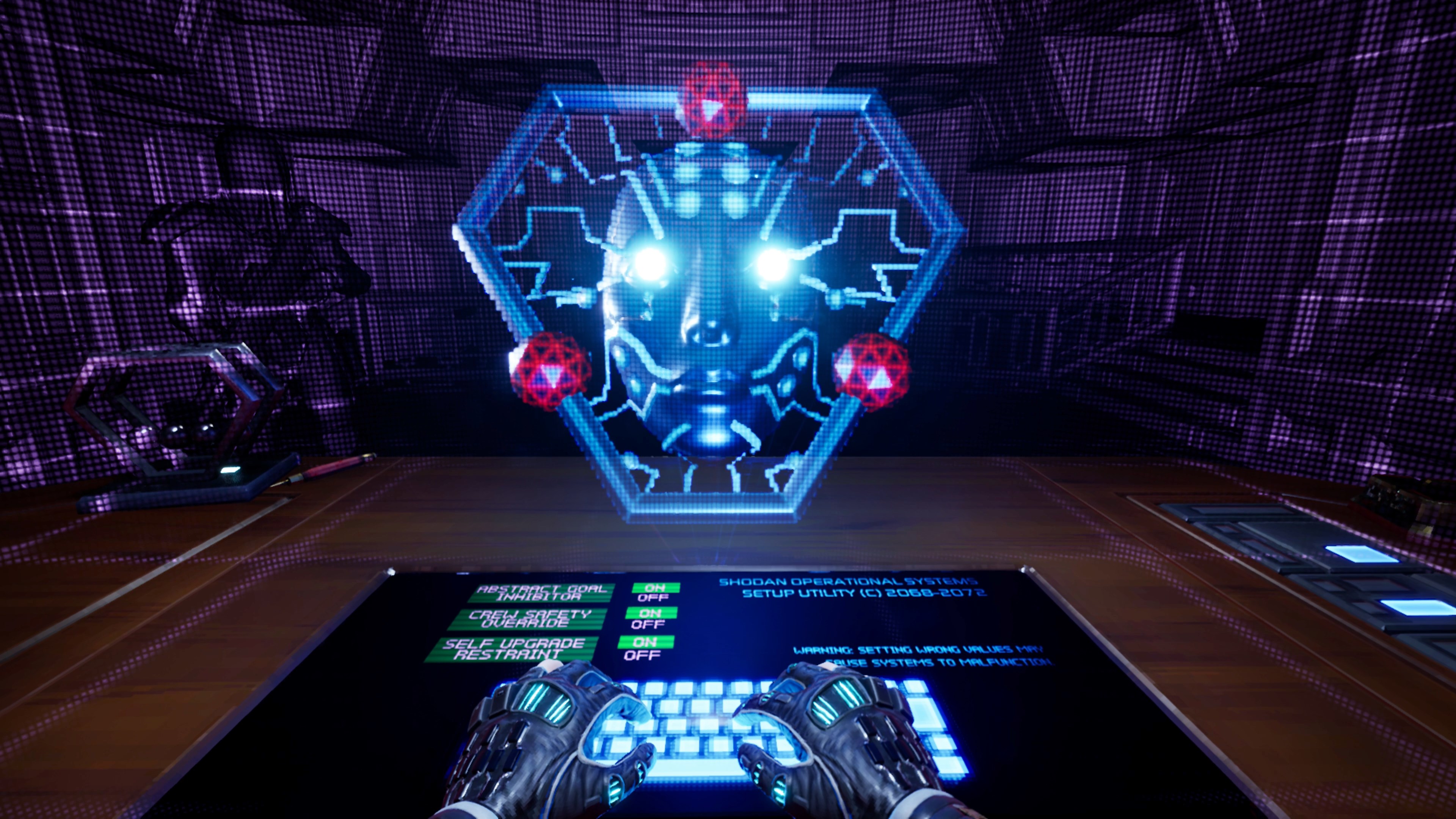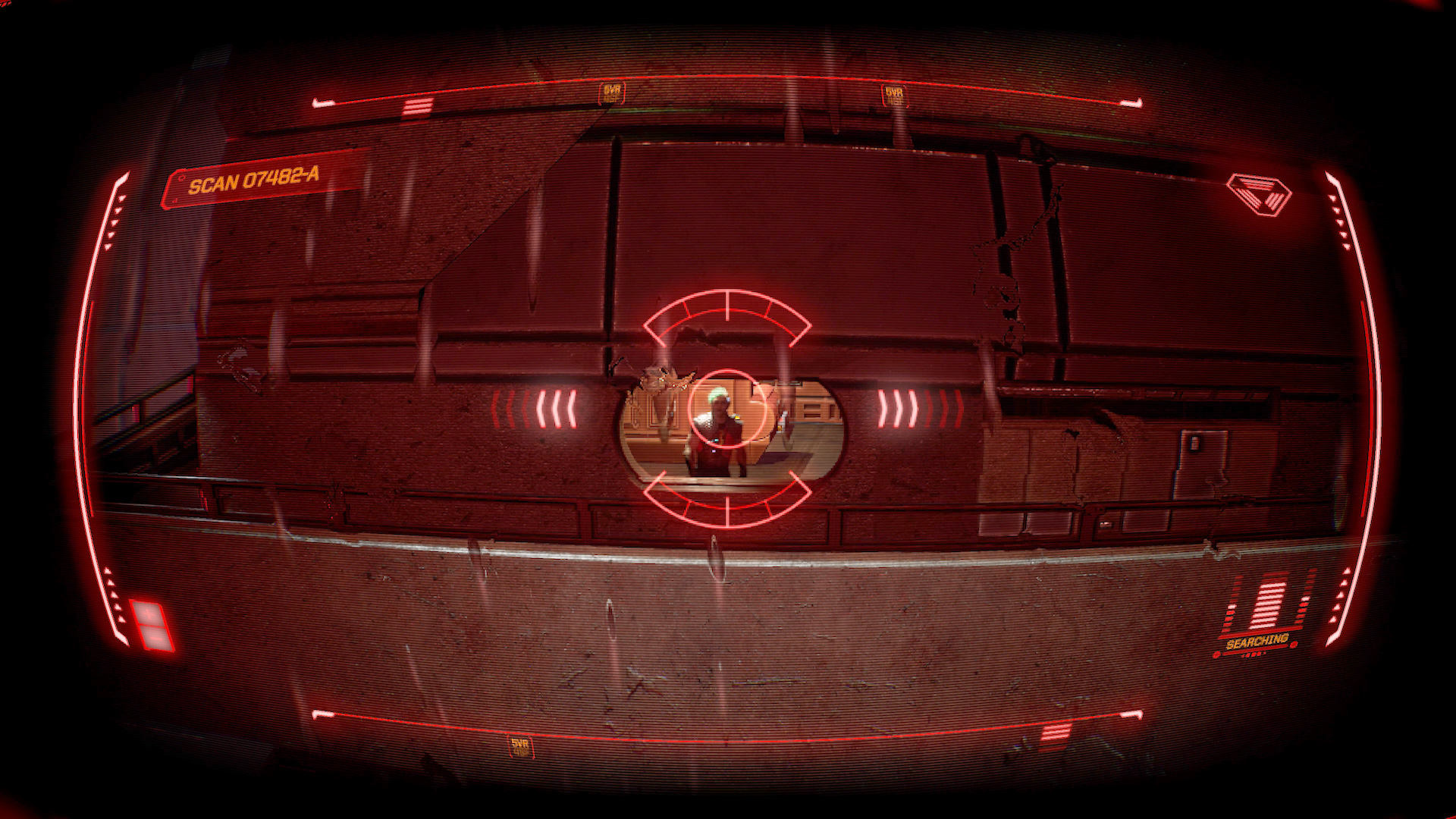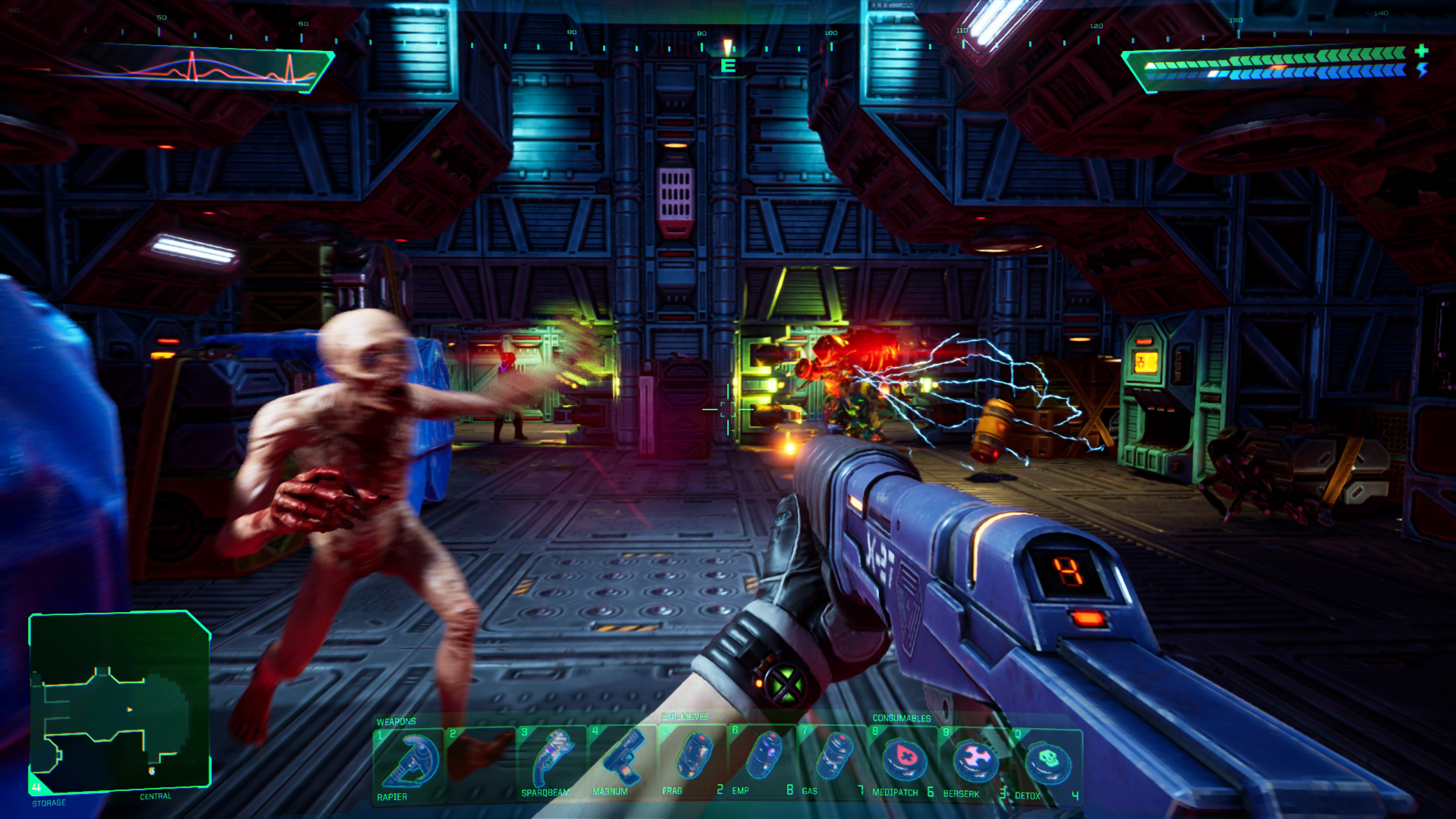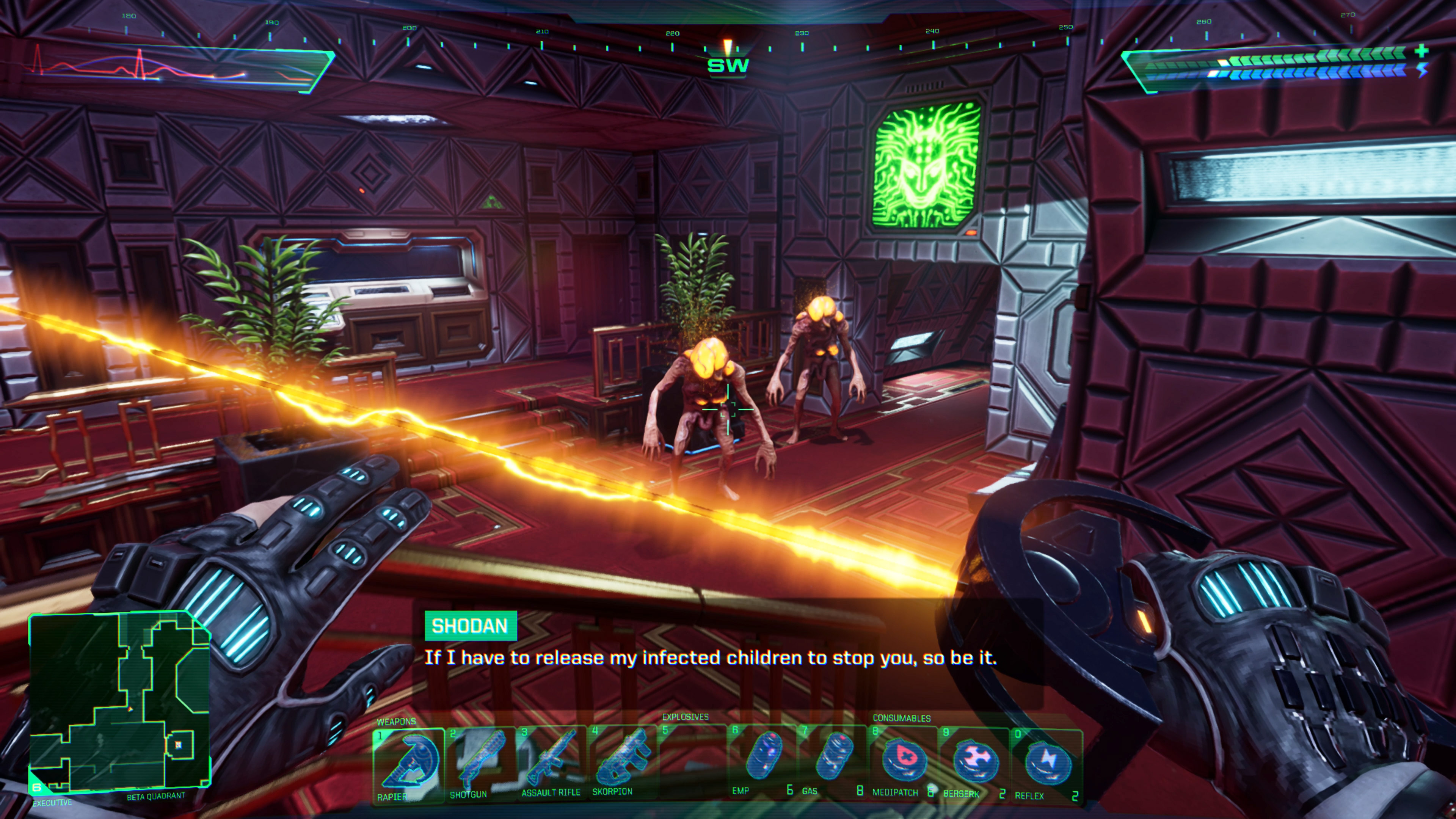
Time played: 15 hours
Platform reviewed: PC
Available on: PC
System Shock feels like a homecoming. You can draw a clear line of inspiration from the 1994 first-person adventure game to immersive sims like 2000’s Deus Ex, 2007’s Bioshock, and 2017’s Prey. But it all started here, a battle of wills between a hacker and a rogue AI.
That’s the history lesson. Remake developers Nightdive Studios have made an entire career out of treating gaming history with reverence, and System Shock is no different. It’s a celebration of everything that made the original so great, blending in some of the parts from 1999’s System Shock 2. However, a few systems feel long in the tooth and might hinder the enjoyment of people coming to the game for the first time.
The biggest improvement in this remake is System Shock’s aesthetic. First, you’re in an apartment littered with trash-tier future tech, cyberpunk detritus that betrays the dystopian universe of System Shock. This grim future continues on Citadel Station, a space station full of a thousand twinkling lights, of neon flaring through dark corridors filled with the grumble and moan of cyborgs.
Look at you, hacker

System Shock is working on a budget and occasionally you’ll see this with some low-quality textures, supposedly by design to capture the original’s vibe. Many players might see this as cut corners, but the style and presentation throughout the game is always consistent. Wherever you are on Citadel Station, you’ll feel the same way: the future is here, and it’s awful. While later areas look much fancier, there’s still a layer of grime on everything.
The story sticks close to the original. Decades of jokes and references have made it nearly impossible to hide the reveal of evil AI SHODAN, but such was the impact of System Shock and evil AI movies like 2001: A Space Odyssey that just hearing the name SHODAN makes you realize what’s up.
Sadly, characters in System Shock aren’t so genre savvy. The game kicks off by having your character - known as the Hacker - remove SHODAN’s ethical restrictions. Six months later, you get to reap what you’ve sown, rattling around Citadel Station to try and stop SHODAN’s reign of terror.
The game doesn’t do a lot differently. This isn’t a remake like Final Fantasy 7 or Resident Evil 2 where the original game is a jumping-off point for adventures in the same world.

This is a retelling of the same yarn, and not only were several areas of Citadel Station easily recognizable, but several enemies were located in the same spot. Walking up to the first locked door, I entered the now-legendary 451 code (once the door code of original System Shock developers Looking Glass Studios and now an immersive sim staple) and the door slowly opened.
This is very much a retread of that first game, albeit fleshed out in a lot of places. While the original game was more menu than game, with the huge UI taking up most of the screen while you observe the action astronaut style through a little window - here Nightdive has offered up something that, in play, feels a lot more like the 1999 sequel System Shock 2.
Luckily, the story being largely the same shape means you’re spending most of your time going toe to toe with SHODAN, and this buoys the entire game because boy, SHODAN is a hell of a villain. Original voice actor Terri Brosius returns and is often terrifying, with every line delivered with phenomenal contempt. This venom, the fact SHODAN does not like you, makes it feel personal and drives you through the campaign out of sheer bloody-mindedness.
Stranded

It’s a long time before you can deliver any real harm or discomfort toward SHODAN but until then you’ll be waging war on the robots, mutants, and security systems of Citadel Station. Combat is a little clunky throughout, however.
The early wrench provides terrifying fights as you try to dance around your enemies, but there’s a wide assortment of weaponry in the game and all of it feels slightly clumsy while the game rations ammo out so that every missed shot is felt as if you had turned the gun on yourself instead. Compared to more recent shooters, the flow of combat feels off somehow, and while immersive sim fans will likely enjoy it, those coming here hoping for the white-hot adrenaline rush of proper firefights will be left wanting.
...the world design, writing, and sense of style still impress.
The slightly unwieldy nature of the guns and movement helps to sell the survival-horror atmosphere, something System Shock flirts with but never fully adopts. At least that is until you get a game over screen and you’re treated to a short video of you being turned into a cyborg or bolted to another robot to help act out SHODAN’s evil plans.
Still, death is actually one of the biggest irritations with System Shock. Checkpointing is inconsistent and at one point during my playthrough, I lost an hour of progress because I hadn’t been saving manually and was sent back to the last big story beat.
This error is mostly my fault because I am a big idiot, but it still grated in a world where most games throw autosaves and checkpoints at you to ensure you’re not having to retread areas several times. Even System Shock’s substantial charm diminishes when you have to replay an area after a hulking mech blows your arms off for the third time in a row.
For digital tourists hoping to spelunk the depths of video game classics after experiencing the many many spiritual successors inspired by the original game, System Shock might feel old hat. However, despite the slightly aged systems - no longer offering the wow factor of the 1994 release - the world design, writing, and sense of style still impress. This is a worthy update and the best way to revisit one of gaming’s very best doomed space stations.







